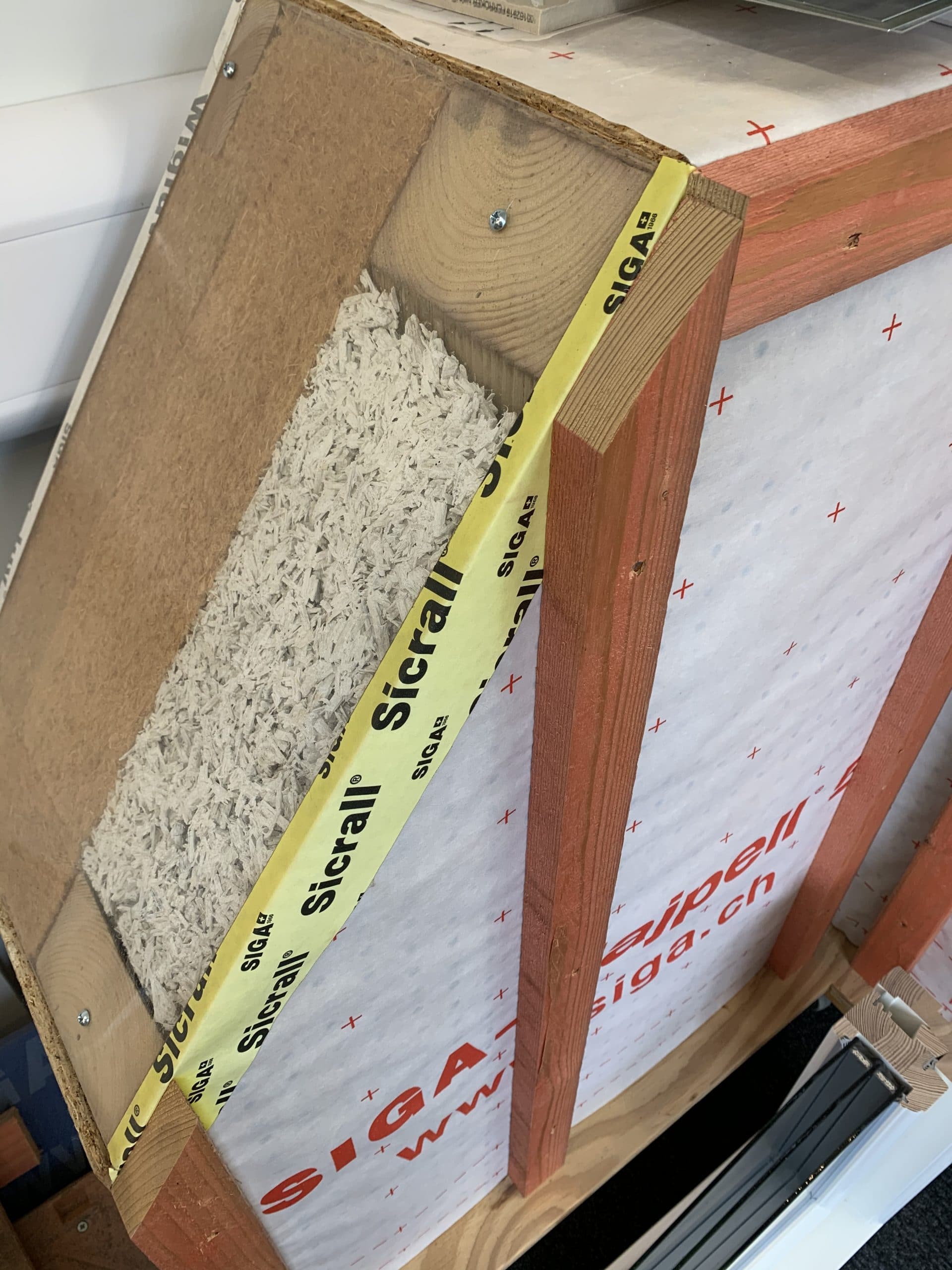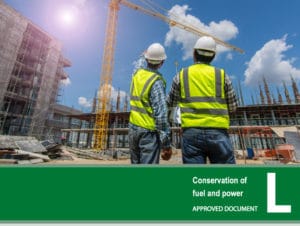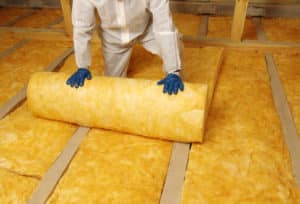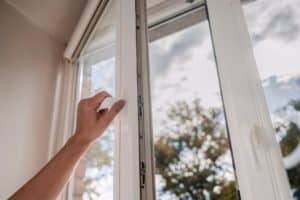Today, there’s a huge focus on reducing carbon emissions and hitting Net Zero by 2050 in the UK. With this in mind, it is essential for the building industry to meet the stringent energy efficiency targets set by the UK Government which, of course, includes eco-friendly build materials and eco design. More than ever, it’s important to make the effort to reduce our energy consumption and choose wise, environmentally friendly materials to help meet targets, but help our precious planet.
Eco-friendly build materials are used for various areas within construction such as production and maintenance. As the UK works towards reducing carbon emissions, many construction agencies are doing their bit to make their developments as sustainable as possible.
There are exciting newcomers to the construction market as well as reliable eco-friendly building materials that have been around for centuries that are seeing a renewed popularity. To help you learn out more about what new materials you could be using to help build your development, we’ve put together this handy guide on the most eco-friendly build materials of 2021.
What are Eco-Materials?
In the building industry, environmentally friendly materials are those in which, for their production, placing and maintenance, are of low environmental impact. Eco-friendly building materials are created to make sure they do not harm the environment; whether that’s in production, use or disposal and can be easily recycled. Using eco-friendly materials will be hugely beneficial in the long run, both for yourself and the environment; Building yourself a green home reduces carbon emissions, saves energy and money on your energy bills.
The Principles of Sustainable Construction
The 7 Principles of Sustainable Construction must be considered when it comes to the earliest stages of building developments to ensure construction is as sustainable as possible. For example, the principles cover areas such as:
- Sustainable design
- Durability
- Energy efficiency
- Waste reduction
- Indoor air quality
- Water construction
- Sustainable building materials
Brought together, these 7 principles are methods used to contribute to a greener build environment and help to reduce our carbon footprint. Make sure to consider these factors in your design stage with the consideration of eco-friendly materials.
Eco-friendly insulation
When building a property, insulation is an important aspect to consider. Insulation is great for retaining heat during the winter and also reducing the cost of heating and cooling throughout the year. For more than a century, most new homes were built using fiberglass insulation, but this caused many health issues over the years as well as not being great for the environment. Now, many green home insulation alternatives have been created to make your home as safe and healthy as possible. Examples of these eco-friendly insulation include:
- Sheep wool
Sheep wool is fire retardant and is the perfect material to keep your home warm. Sheep wool helps to generate heat while also preventing condensation which is great for keeping your home warm in the winter and cool in the summer.
- Cotton/denim – ££££
Cotton is a natural resource and is one of the most eco-friendly insulation options on the construction market. In addition, blue jean scraps are shredded and recycled into thick batts that fit into your walls just like fiberglass. Cotton is a natural insect repellent and doesn’t cause respiratory problems. However, one thing to consider is the price. Compared to fiberglass, cotton is expensive, costing nearly twice as much.
- Icyene
Icynene is a spray foam made out of castor oil that expands about 100 times its volume when you spray into a wall. Icyene seals leaks and drafts and cancels noise. It is one of the strongest home insulation alternatives, but it can be expensive due to the upfront costs. However, in the long run, It can massively reduce your energy bills!
- Wood Fibre
Wood fibre boards are a renewable source of insulation that also deliver a variety of functions; It provides robust and flexible insulation for floors and roofs. The wood is recyclable and locks in carbon during growth and is relatively free from polluting factors.
Eco-Friendly Windows
For many new construction businesses, eco-friendly windows are not a new concept and many new builds now have these windows fitted – no questions asked. The construction industry has now started to move towards eco-friendly replacement windows due to the benefits both on the planet and the client’s bank account!
When looking at the options for eco-friendly window materials, there are now a vast amount of options to choose from. No matter the budget or design, there will be something perfect for you. Materials include:
- Wood
Wood is a traditional choice for many construction businesses due to being a cheaper option, but also looking pretty retro.
- Aluminium
Aluminum is one of the most widely used window frame materials due to its strength and durability in multiple weather conditions. It is one of the cheaper options and great for house window frame materials.
- Vinyl
Vinyl continues to be known as a great budget material and is a perfect material that does not sacrifice usability.
- Composite
Composite window frames are one of the top green, sustainable window frames in the market today due to being made from wood shavings and recycled plastics.
- Wood-Clad
Considered the best of both worlds, wood-clad combines a tough exterior such as vinyl or aluminium with a wood interior for a great alternative option.
- Fibreglass
Fibreglass is one of the most expensive options on the market, but is considered one of the longest lasting and most eco-impact window framing.
Eco-friendly Foundations
The building foundation is at the core of a safe and secure home environment for families. As the base of all our buildings, foundations provide the stability needed to give us a solid and healthy environment.
Concrete is the world’s most widely used material for construction. It is used in a variety of construction projects such as building bridges to large buildings. Concrete forms the very foundation of our infrastructure with a whopping 70% of the world’s population living in a concrete structure. However, there has been speculation that concrete is a major contributor to greenhouse emissions. Alternative sustainable concrete has been created to help reduce carbon emissions.
- Green concrete
Green concrete is made using waste materials and requires less amount of energy for production. It also produces less carbon dioxide and is considered cheaper and durable. Bonus!
- Ashcrete
Ashcrete heavily utilizes recycled fly ash. Fly Ash is mixed together with lime and water to make it strong and durable.
- Concrete Debris
Concrete debris is used in a way to utilize waste concrete materials and cut down resource consumption. This helps to save valuable landfill space and reduce the use of virgin raw materials.
- Blast Furnace Slag
Similarly to fly ash, blast furnace slag is a byproduct that can be recycled and used to make an environmentally friendly alternative to concrete. It is produced by quenching molten iron slag from the blast furnace into water.
Eco-friendly Bricks
Green bricks are an environmentally friendly alternative to concrete and high-fired clay bricks. At the same time, eco-friendly bricks look, feel and functionality is exactly the same as conventional bricks.
- Hempcrete bricks
Hempcrete is an environmentally friendly alternative to concrete and is made of hemp, lime and water. Hempcrete is eco-friendly and carbon negative due to the amount of carbon dioxide during the growing and harvesting of the hemp.
- Recycled glass brick
Recycled glass brick is currently researching a solution for glass waste by breaking down glass bottles into sand which is used to create eco-bricks for construction and paving. The glass is used to replace normal sand in brick making the eco-bricks more eco-friendly with over 70% of it being waste material.
- Green leaf brick
Green leaf brick is 100% recycled scrap. It is not recycled brick, but is quality, newly manufactured red and brown brick made from materials from landfills and plant refuse.
- Clay brick
From its production and its extended product life, clay brick is friendlier to the environment compared to other convenience materials. The brick reduces the strain on local infrastructure by reducing demand for landfills, water supply, storm water management and transportation of materials.
Recycled Materials
There are many different types of materials that can be recycled from construction and demolition projects which, of course, saves you money, reduces waste disposal costs and helps the planet.
Recycled materials include:
- Plasterboard
- Metals
- Plastics
- Glass
- Wood
- Bricks
- Floor and wall coverings
- Insulation
- Packaging
Top 7 most eco-friendly materials 2020
Eco-friendly building materials experienced a massive surge in 2020 due to the rise of sustainable construction. There are many materials for you to consider when building your eco-friendly development and we’ve listed many different and interesting options for you, but which ones were favourites within the industry last year?
Take a look at what were the top 7 most eco-friendly materials used in 2020:
- Bamboo
- Straw Bales
- Timercret
- Recycled Plastics
- Ferrock
- Hempcrete
- Cork
Like we said, there are so many different materials to choose from and you need to find which ones best suit yourself, your budget and most importantly, your development. If you need help deciding which avenue to take, we can help!
Eco-Materials vs Eco Design
When working towards creating a sustainable build, taking into consideration your eco design is just as important as using eco materials. Prioritizing sustainable designs will help to meet the needs of both people and the environment.
Energy efficiency over the lifetime of a building is one of the most important considerations when looking into sustainable design. For example, placing a building correctly towards the sun will allow natural light and warmth to come through and reduce the need for powered heating and lighting. Adding in eco materials on top of the design will help the construction industry create sustainable builds that are kind to the environment and help occupiers save money!
For more information on how eco design and eco materials go hand in hand and how we can help you with your project, check out one of our client stories from Deanfield Home.
Advice on Eco-friendly building materials
The reality is, bad design can cancel out any of the gains you make in choosing eco-friendly materials; it pays to take a holistic approach and get a sustainability consultant on board as early as possible.
And to top it all off with good news, we can help you! Book a consultation with us today and we will help you to choose the most sustainable and cost-effective materials perfect for your project. If you need help with design too, we can also factor that in! Give us a call today – we can’t wait to meet you and help your project flourish.




















